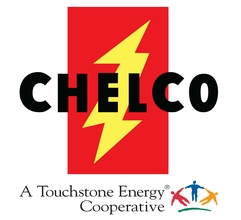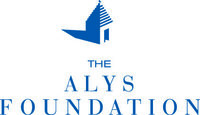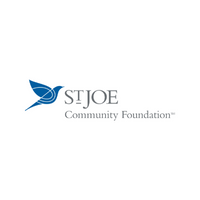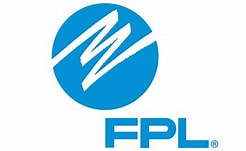Creating Future Scientists through Exploration and Discovery

- School:
- Dune Lakes Elementary School
- Subject:
- STEM Education
- Teacher:
- Jessica Harris
- Elizabeth Sober
- Students Impacted:
- 80
- Grade:
- 4
- Date:
- October 9, 2023
Investor
Thank you to the following investor for funding this grant.
The Alys Foundation - $1,401.76
Original Grant Overview
Goal
As a teacher, there is nothing more magical than seeing the excitement and wonder in children as they explore the natural world. The best way we can provide opportunities like that while in the classroom is through the use of high-quality supplies and materials. Our project aims to bring the wonders of science to life for our fourth-grade students by enhancing their learning experience with fun and exciting hands-on equipment and educational models and displays. By providing engaging and interactive resources and experiments, we hope to spark curiosity, inspire critical thinking, and nurture a love for science in young minds.
What will be done with my students
Our project will unfold over the course of the school year and will impact 80 fourth-grade students for this current school year. It will include a variety of science experiments and labs designed to align with key topics from the fourth-grade curriculum. These activities will involve collaboration among multiple teachers in order to increase its impact on a larger number of students. Here is a summary of our plan:
Acquiring Materials
We will purchase a variety of hands-on and display materials, including magnifying glasses, magnets, balance scales, mineral streak plates, circuit kits, electric hot plates, beakers, graduated cylinders, storage for the materials, batteries, butterfly kits, and scientific models. These materials will be used to create immersive learning experiences in the classroom that will ignite a thirst for knowledge in our students.
Classroom Exploration
Teachers will integrate these materials into science lessons as well as during implementation of hands-on labs, allowing students to explore scientific concepts firsthand and increase student retention of information. For example, students will use magnets to understand the principles of attraction and repulsion or build simple circuits to grasp the basics of electricity and energy.
Butterfly Kits
Students will observe the life cycle of butterflies through the butterfly kits purchased with this grant. This hands-on experience will provide valuable insights into metamorphosis and ecology.
Models for Concept Visualization
The orbital model for Earth, Sun, and Moon, along with the flower and life cycle models, will help students visualize complex scientific ideas. These models will serve as educational tools during classroom discussions and presentations.
Project Timeline
We will begin implementing the use of these materials and activities as soon as funds are procured and continue throughout the academic year.
1. November – December: Implement hands-on activities focusing on earth science concepts.
2. January – March: Explore physical science through experimental learning.
3. April – May: Students will gain knowledge of life science through observation of butterfly metamorphosis and germination of seed plants.
This timeline allows for a well-rounded and immersive science experience. The activities and lessons enhanced by these materials will be sure to enrich classroom discussion, foster inquiry and curiosity in students, and increase knowledge gains. These materials will be used again in each successive school year.
Benefits to my students
The proposed materials will have a profound impact on our students' learning experiences. Here's how we plan to evaluate and measure the success of the utilized materials with acquired funding:
Measurable Outcomes:
- Increased student engagement and participation in science lessons.
- Improved understanding of complex scientific concepts.
- Enhanced critical thinking and problem-solving skills.
- Heightened interest in science-related subjects and pursuing STEM-related fields.
Outputs:
- Acquisition of hands-on and display materials.
- Integration of materials into fourth-grade science lessons and experiments.
- Observations of the butterfly life cycle.
- Use of models for visualizing scientific concepts.
Evaluation Plan
We will assess the impact of our project through various methods:
- Pre-and post-topic assessments including the End of Year District Science Assessment to measure knowledge gains.
- Classroom observations to gauge student collaboration and involvement.
- Surveys to gather student feedback.
- Review of student performance in science labs, assignments, quizzes, assessments, and projects.
Estimated Impact
This school year and each year following, two fourth grade science teachers and approximately 80 total students will directly benefit from this project. As the materials are reusable, these materials will continue to benefit future students for many years to come.
Budget Narrative
The Illuminated Sun, Earth & Moon Orbital Model (2) will be purchased to show and help develop students understanding of how the Earth, sun, and moon move through space using 3D models for improved concept visualization.
The Illuminated Globe of the World (2) will show students how the constellations appear around our planet at night and will also be utilized to explain to students how Earth's axis goes from the North to South pole and that Earth is split into two hemispheres at the equator.
The Electric Hot Plate (2), Plastic Graduated Cylinders & Beakers (2), and 24 Pack of Magnifying Glasses will be used to perform a variety of experiments and labs throughout the school year.
The Scientist Bulletin Board Set Laminated Science Posters (2) will be used to display the Scientific Process to increase students' understanding of the nature of science.
The Life Cycle Learning & Education Montessori Toys (2) will give students the opportunity to look at various life cycles and engage in hands-on learning to gain knowledge of a variety of animals' and their stages of development.
The Electricity & Magnetism Experiment Kit for Students (20) will allow students to work in partner pairs to increase participation and engagement while learning about magnets and electricity through discovery and trial and error experimentation.
The 12 Pack Black Streak Plates for Mineral Testing and United Scientific Glass Steak Plates will allow students to test and compare the hardness of different rocks and minerals during our rocks and minerals unit.
The Junior Science Magnetism Set for Experiment Education (20) will allow students to gain further understanding of magnets and their properties through active investigation.
The Scientific Flower Model (2) will give students an in depth and accurate 3D representation of the anatomy of a plant. With the use of this tool, students will be able to better visualize each of the plant parts and their contribution to the survival and reproduction of the plant.
The Amazon Basics 48 Pack AA Batteries (2) will be used to power the circuit kits for students to study electricity and energy.
The 10 Pack 2.7 Qt Stackable Storage Bins (2) are needed to organize supplies and set up our rock and mineral lab kits. During this lab, students will be able to discover and learn about rocks and minerals and their physical properties.
I am most excited about the National Geographic Butterfly Growing Kit (2) which will allow students to see the process of metamorphosis and the butterfly life cycle from beginning to end. I know students will truly enjoy this magical event as it unfolds before their eyes.
The estimated total cost of these items is $1,401.76. Each and every penny will go directly toward increasing student success in science education and fostering creative curiosity in all learners that this project touches.
By supporting this project, you will contribute to the creation of a dynamic and engaging science learning environment for our fourth-grade students. Your investment will help unlock the wonders of science, foster a lifelong love for learning, and inspire the next generation of scientists and innovators.
Thank you so much for your consideration of our grant application.
Sincerely,
Dedicated Science Educators
Items
| # | Item | Cost |
|---|---|---|
| 1 | Illuminated Globe of the World (2) | $99.98 |
| 2 | Illuminated Sun, Earth & Moon Orbital Model (2) | $257.98 |
| 3 | Electric Hot Plate (2) | $23.98 |
| 4 | Plastic Graduated Cylinders & Beakers (2) | $33.98 |
| 5 | 24 Pack Magnifying Glasses | $10.49 |
| 6 | Scientist Bulletin Board Set Laminated Science Posters (2) | $13.18 |
| 7 | Life Cycle Learning & Education Montessori Toys (2) | $71.98 |
| 8 | Electricity & Magnetism Experiment Kit for Students (20) | $339.80 |
| 9 | 12 Pack Black Streak Plates for Mineral Testing | $20.70 |
| 10 | United Scientific Glass Steak Plates | $19.23 |
| 11 | Junior Science Magnetism Set for Experiment Education (20) | $239.80 |
| 12 | Scientific Flower Model (2) | $145.98 |
| 13 | Amazon Basics 48 Pack AA Batteries (2) | $30.72 |
| 14 | 10 Pack 2.7 Qt Stackable Storage Bins (2) | $59.98 |
| 15 | National Geographic Butterfly Growing Kit (2) | $33.98 |
| Total: | $1,401.76 |






Share
Please share this page to help in fulfilling this grant.
Email to a Friend